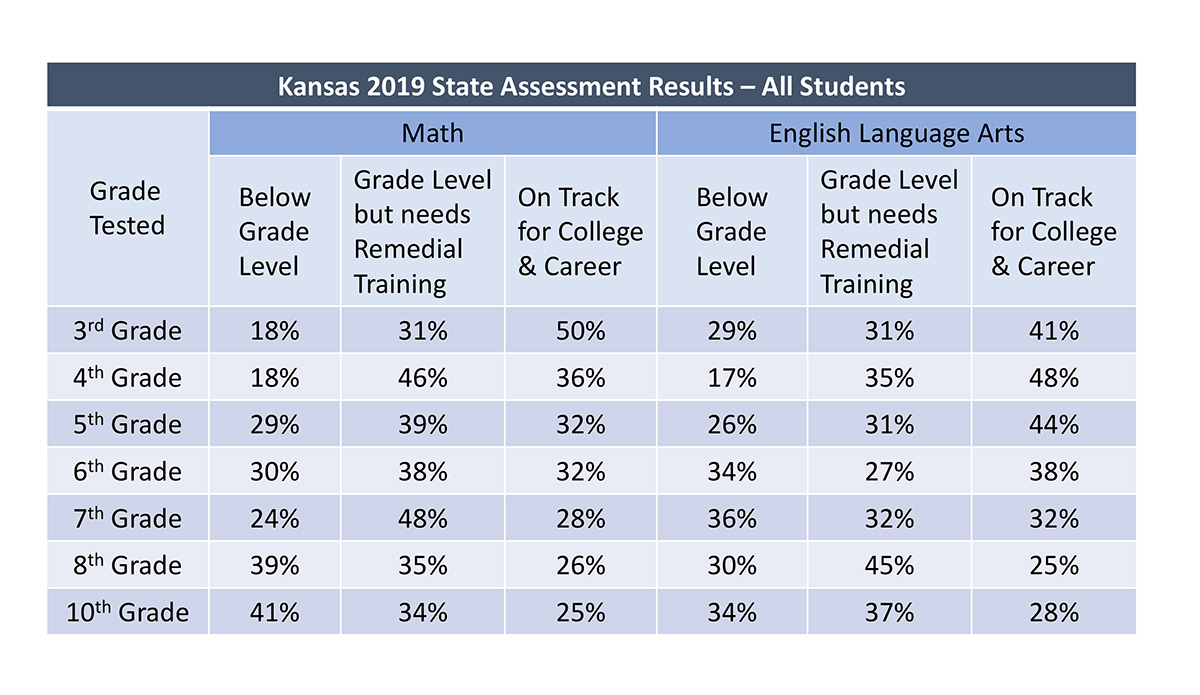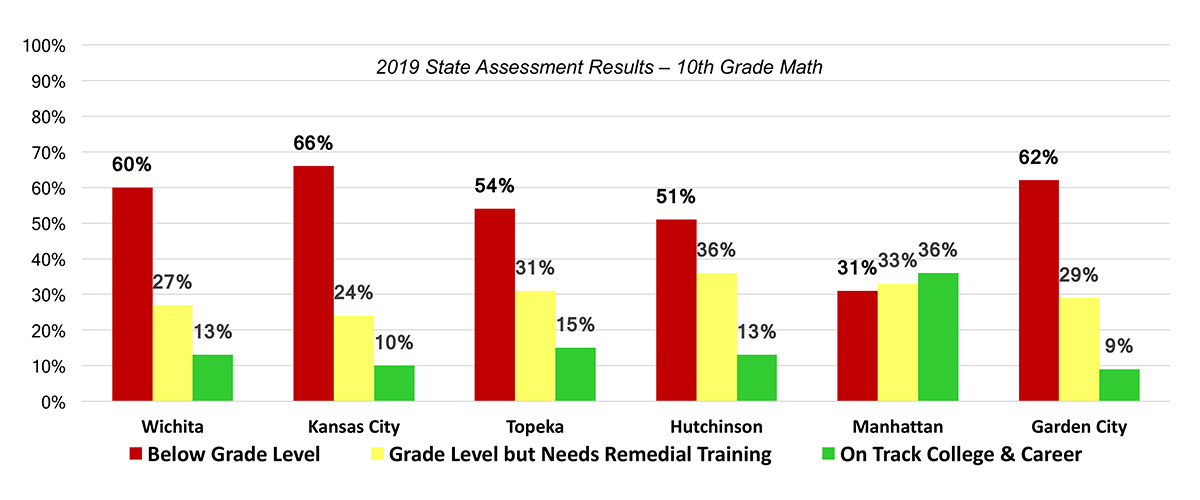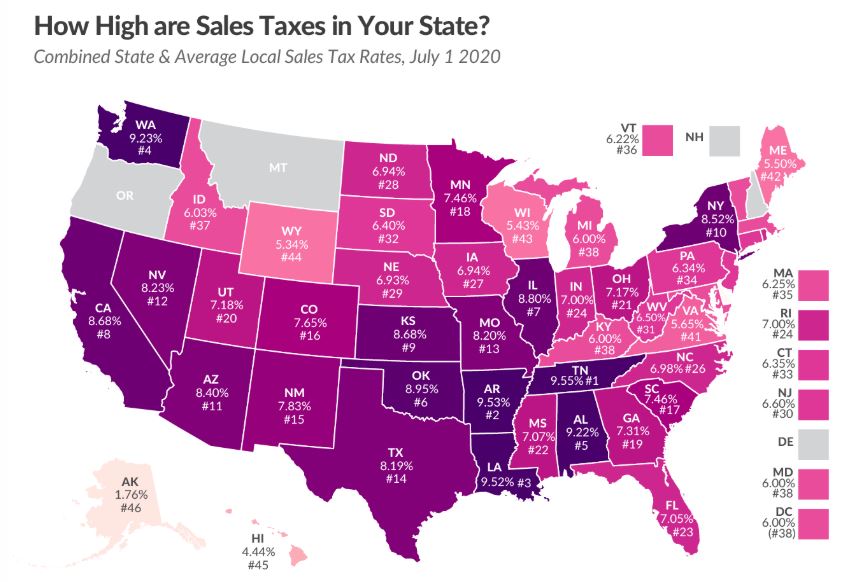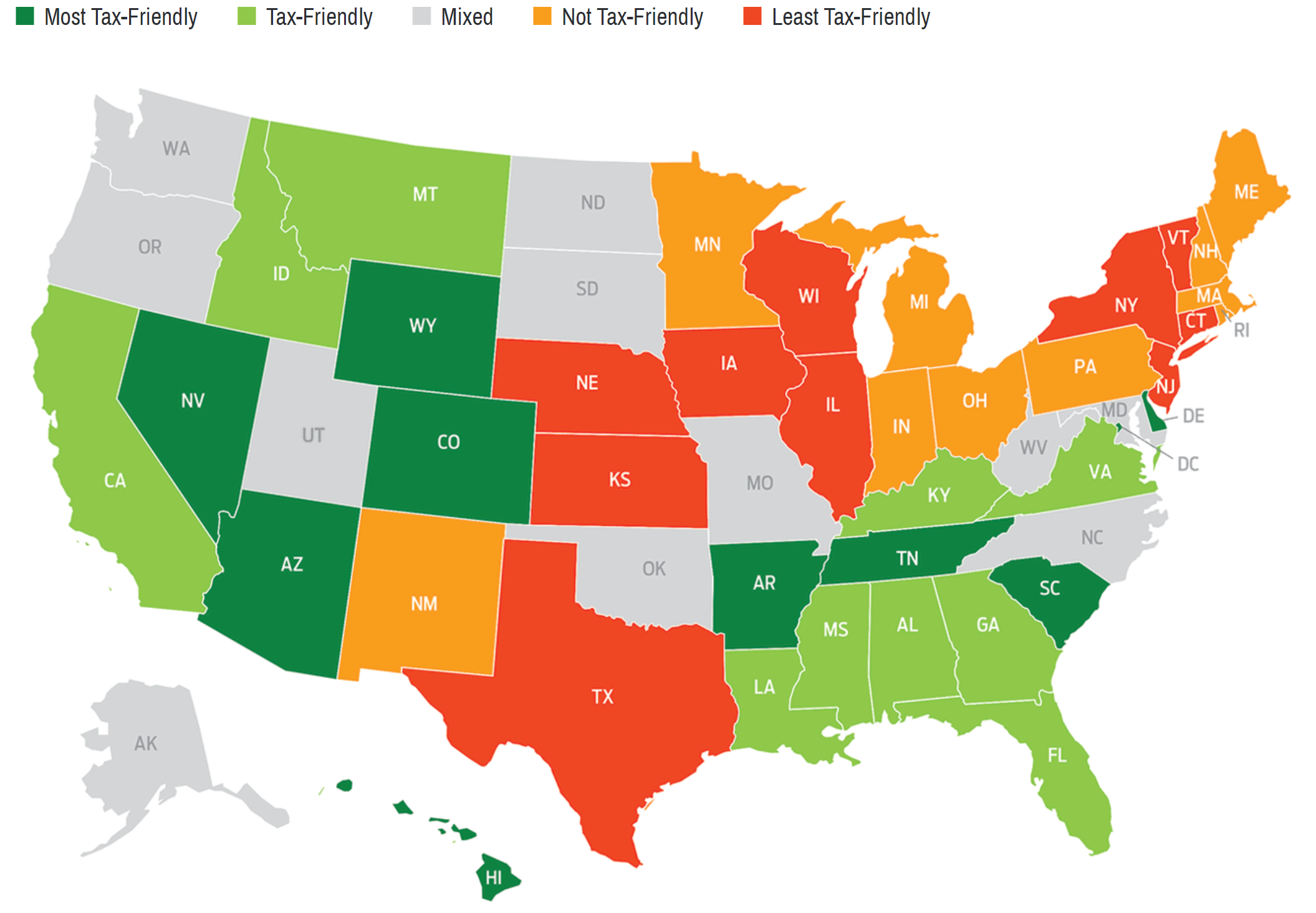Nearly two-thirds of Kansas fourth-graders and 75% of Kansas 10th graders tested below grade level or needing remedial training in math, according to state assessment data published by the Kansas Department of Education.
Statewide, the results of the 2019 assessment tests aren’t much different than the results of the 2018 test. For all grades tested in 2019 (grades 3 through 8 and the 10th grade), 28% of students tested below grade level in math, 39% tested at grade level but still need remedial training to be on track for college and career, and only 33% tested on track for college or career. In English language arts (ELA), 29% are below grade level, 34% are at grade level but still need remedial training, and 37% are on track.
“This is our perennial confirmation that spending more money does not actually help students achieve at higher levels and prepare them for success after school,” said James Franko, President of the Kansas Policy Institute. (KPI owns the Sentinel).
For more than a decade, Kansas lawmakers focused their attention on how much money schools received. In the meantime, student achievement has remained nearly flat and disturbingly low.
The 2019 assessment tests show that students may not be getting fundamental training in lower grades because the percentage of students on track in math and ELA decreases as students advance. Similarly, the percentage of students below grade level increases.
For instance, the testing showed that only 18% of third-graders tested below grade level in math, while 41% of students tested below grade level in 10th grade. The decline isn’t as sharp in ELA, where 29% of Kansas third-graders tested below grade level, and 34% of 10th graders tested below grade level.  That translates into high numbers of students requiring remedial training in college, despite a slight uptick in graduation rates. Between 2012 and 2018, Kansas graduation rates increased from 85% of students graduating within four years of their freshman year to 87.3% graduating within four years in 2018.
That translates into high numbers of students requiring remedial training in college, despite a slight uptick in graduation rates. Between 2012 and 2018, Kansas graduation rates increased from 85% of students graduating within four years of their freshman year to 87.3% graduating within four years in 2018.
State Sen. Molly Baumgardner, R-Louisburg, told a select committee on education in 2017 that of the 65% of Kansas high school graduates who go on to college, nearly 40% require remedial training. She said that’s even true of students from affluent areas. At the time, she noted that 58% of the recent high school graduates who attended Johnson County Community College required remedial training.

State assessment results in Johnson County districts bear that out; less than half of the 10th graders in Johnson County public schools tested as on track for college or career. In Blue Valley, for example, 51% of 10th graders tested below grade level or needing remedial training in math. Students in neighboring Johnson County districts fared worse.
In Shawnee Mission, 67% of students tested below grade level or needing remedial training in math; in Olathe, 63% were deemed not-on-track for college and career. 61% of De Soto’s students are below grade level or need remedial training and more than 70% of 10th graders tested below grade level or needing remedial training in the Spring Hill and Gardner-Edgerton school districts.
The results are even more disturbing in many cities across Kansas. At least 85% of 10th-grade kids are below grade level or need remedial training in Math in Wichita, Kansas City, Topeka, Hutchinson, and Garden City. In Manhattan, 64% are below grade level or need remedial training.

Rep. Kristey Williams, an Augusta Republican, said it’s telling that Butler Community College offers nine different courses that serve as pre-requisites to college algebra.
“That’s nine different courses to prep yourself. You might need one. You might need two. You might need nine,” she said. “I can understand if you’re 30 and going back to school, but those are all remedial classes. We paid for those in high school and now we’re paying for those in college.”
She noted that local taxpayers foot the bill for high school students to learn those things and then they subsidize the same courses for potentially the same students a second time at the junior college.
Finding solutions to improving student outcomes is difficult, however.
Since the latest state assessment scores were released, Williams says she’s been asking her local school officials what can be done to catch struggling students early and provide interventions.
In the meantime, she’s hoping to increase transparency so parents, taxpayers, and officials know how students are faring in school.



